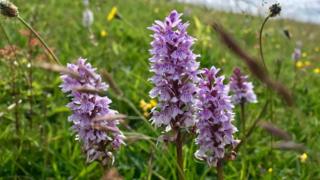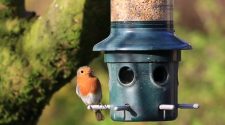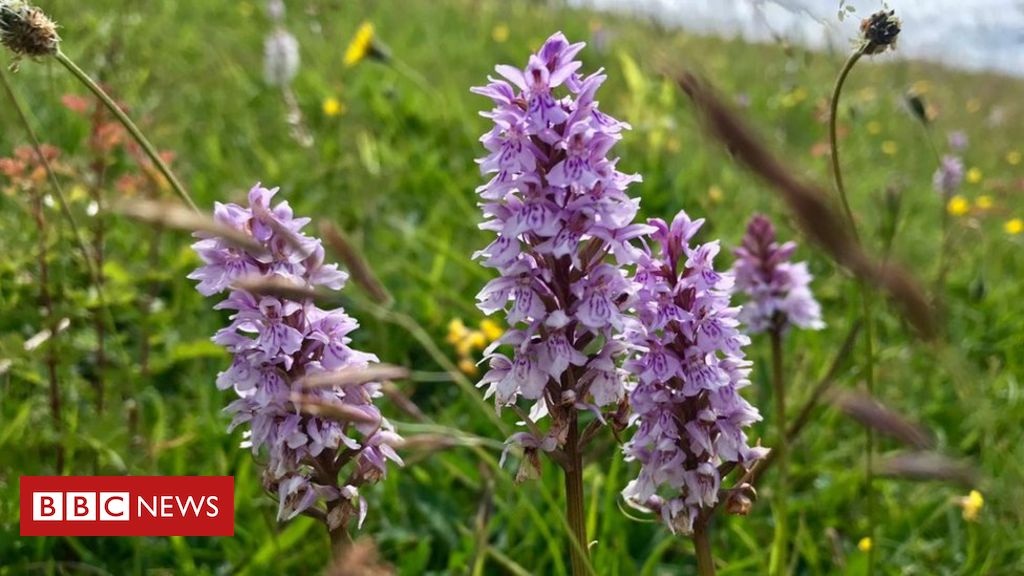
The slopes of the sunken trails on Dunstable Downs were carpeted by orchids in June
Acres of arable fields left to revert to meadow three years ago have become a hotbed for rare British orchids.
Eight species of the flower are in bloom on the slopes of sunken trails etched out by sheep walking on the Dunstable Downs over hundreds of years.
The area in Bedfordshire, managed by the National Trust, is a Site of Special Scientific Interest (SSSI) due to the presence the orchids.
Ranger Anthony Lambert said the Downs had become a “hidden gem”.
The orchids only flower during June and have thrived in the recent wet spell, he said.
Species include the pyramidal, fragrant and common spotted orchid, as well as the bee orchid – the flower of the county of Bedfordshire.
One of the sunken trails – paths where sheep used to be driven for grazing
The chalk-based Dunstable Downs, which include Whipsnade Zoo, are the highest point in the eastern region of England, rising to 797 ft (243m).
Much of the land has been farmed for generations but has undergone a “managed reversion” to meadow with a series of guided walks and a 5km Park Run introduced for visitors.
More than 5,000 British orchids have bloomed on the slopes of the Sharpenhoe Clappers – a hill and former fort dating from the Iron Age.
Mr Lambert said the “sunken trail” chalk microclimate in which the orchids have thrived was carved out by sheep which were historically driven up and down the slopes to graze.
“It is a real haven here, a hidden gem,” he said.
“When you think how close we are to the A5, M1, Luton and Dunstable, with just a 10-minute walk from the visitors centre you can be really transported back to the tranquil 1930s.
“The soil is right, the nutrients are there, the orchids have no other competition really.
“They are the highlight of the Downs.”



















